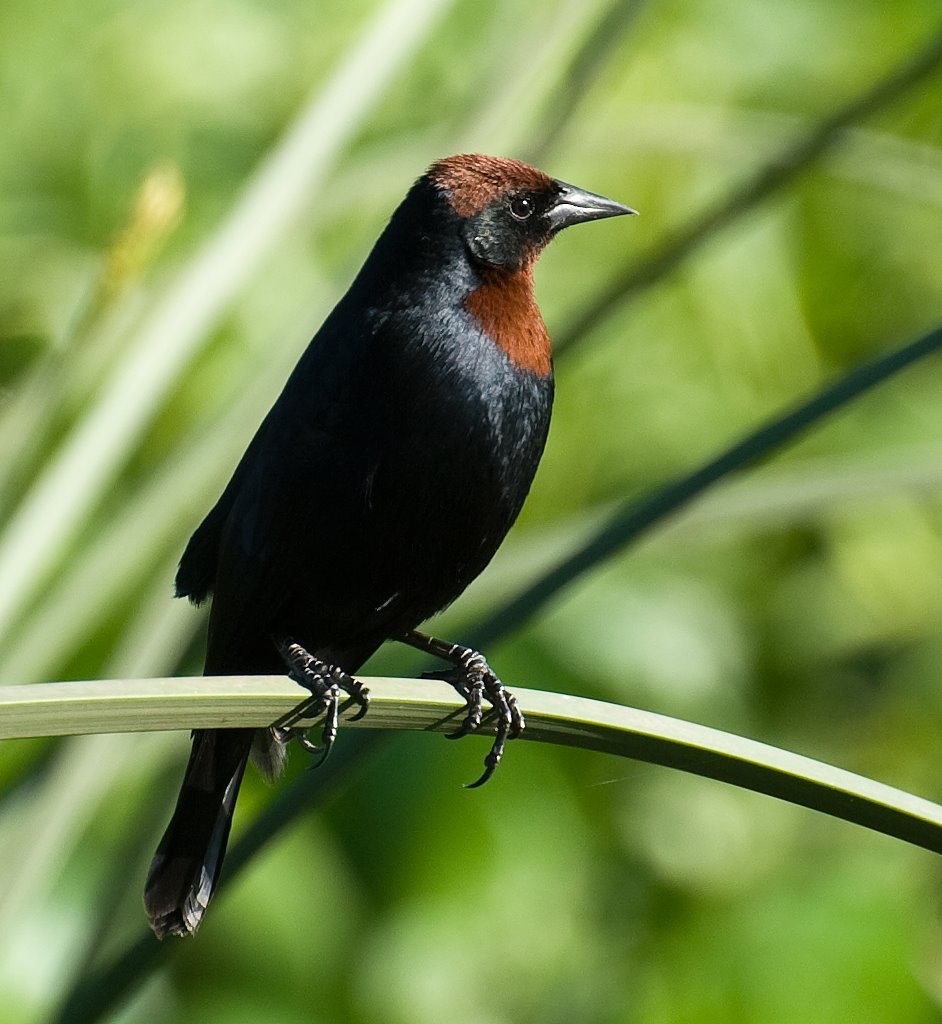Chestnut-capped Blackbird
A species of Chestnut-capped and Yellow-hooded Blackbirds Scientific name : Chrysomus ruficapillus Genus : Chestnut-capped and Yellow-hooded Blackbirds
Chestnut-capped Blackbird, A species of Chestnut-capped and Yellow-hooded Blackbirds
Botanical name: Chrysomus ruficapillus
Genus: Chestnut-capped and Yellow-hooded Blackbirds
Content
Description General Info
Description
The chestnut-capped blackbird is sexually dimorphic. It has a straight dark-coloured beak with a sharp tip, and dark legs. The male has a chestnut-coloured head and throat but is otherwise glossy black; birds in the southern part of the range have darker heads than those in the north. The upper parts of the female are a dark olive-brown, slightly streaked with black, and the underparts are paler olive-brown; the streaking on the back of this species is less distinct than in other birds in this genus. The voice consists of various trills and whistles, the song being a lengthy "chree-chree-churrr". 
Size
18 cm
Nest Placement
Shrub
Feeding Habits
Chestnut-capped Blackbird's diet mainly includes seeds and insects, with a preference for rice seeds. They forage in marshes and on dry ground, often in large flocks, occasionally alongside other icterids.
Habitat
The chestnut-capped Blackbird primarily inhabits wetlands, favoring marshes, both permanent and temporary. It is commonly found in human-altered landscapes such as rice fields, wet grasslands, and agricultural areas prone to flooding. Additionally, it can be observed in open woodlands adjacent to wetlands and is known to nest and roost in trees located in these environments. It is also associated with irrigated fields and rural settings, such as barnyards and corrals, within broader dry scrubland regions.
Dite type
Granivorous
General Info
Feeding Habits
Bird food type
Distribution Area
The chestnut-capped blackbird is found in the tropical and semi-tropical eastern part of South America at altitudes of up to 850 metres (2,800 ft). Its range covers much of the Amazon Basin and extends from northern Brazil to northern Argentina. It is found in the vicinity of water, in marshes, in nearby grassland and in rice fields. 
Species Status
Not globally threatened.
